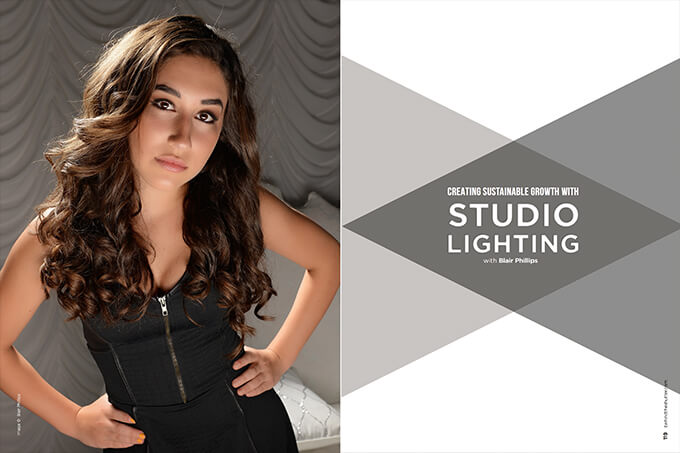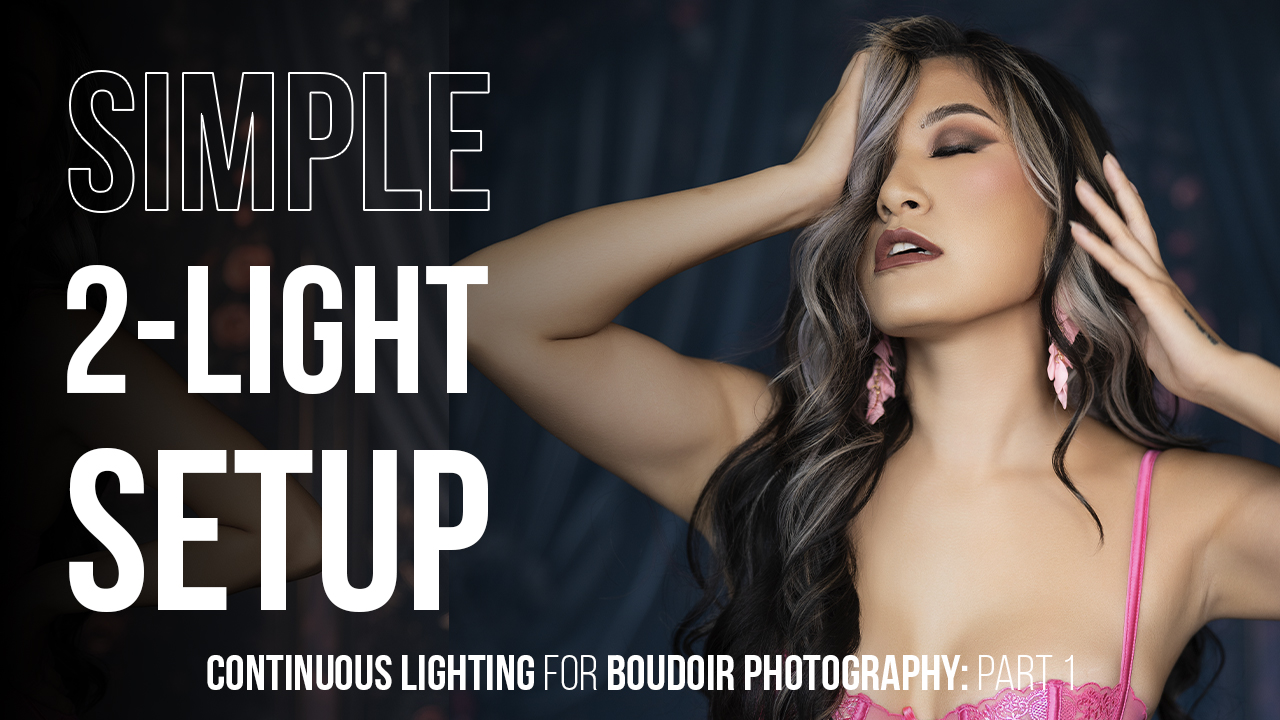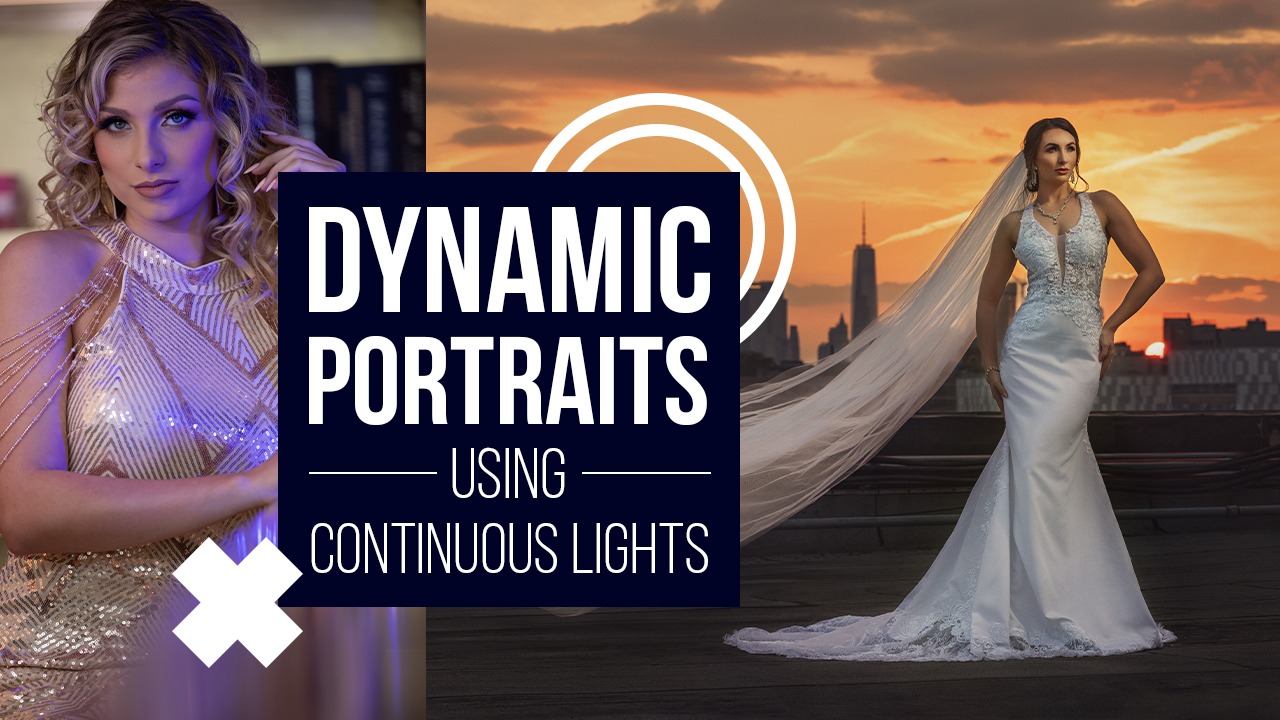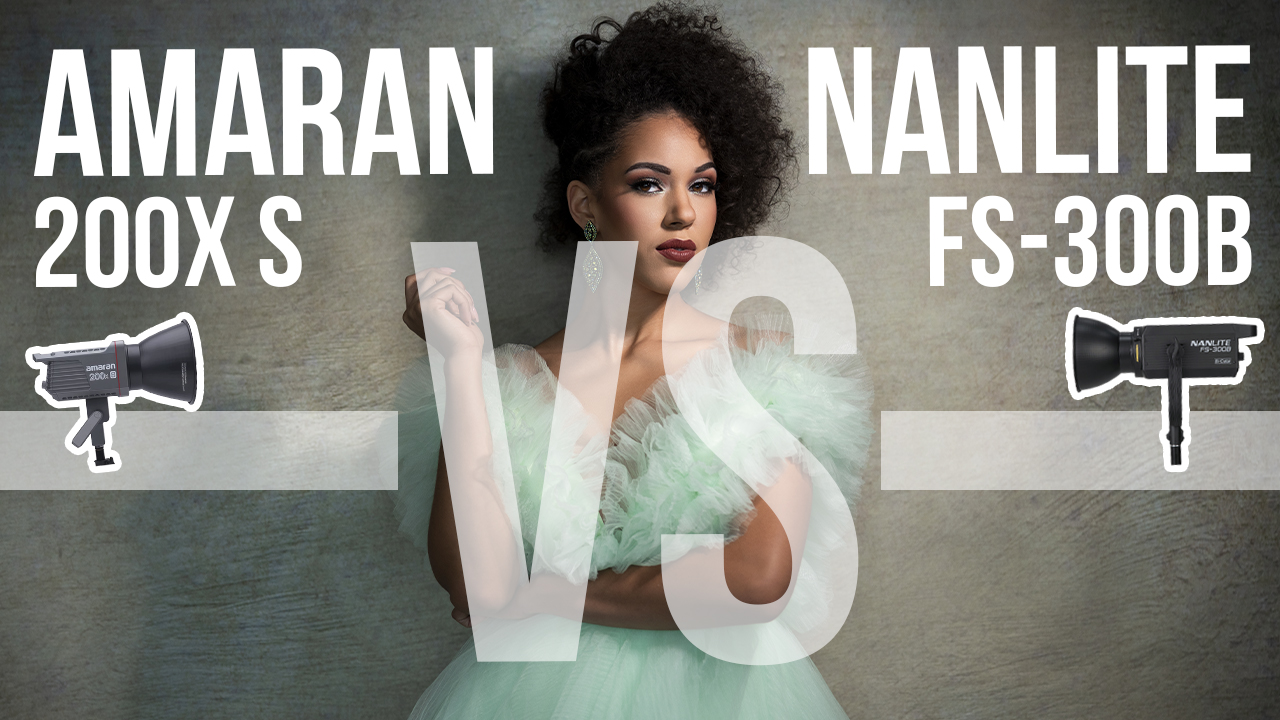Creating Sustainable Growth With Studio Lighting with Blair Phillips
Photography has continued to become more diluted over the past several years. Fewer people are hanging wall portraits. Even fewer get images printed any longer. Point-and-shoot cameras are rarely seen anymore in public. Nearly everyone reaches for their cell phone to capture anything picture-worthy. The public can take a decent picture, run it through a filter on their phone and end up with a pretty good picture.
Many no longer see the value in hiring a professional. It is almost our job to educate people on the components that make a great photograph. One of the most important components is versatile lighting. Lighting is the one component that will keep your phone ringing. Anyone can take a picture, but not everyone can produce a vast array of beautiful lighting.
Quantity, output and positioning of lighting are the main challenges. When I first began my photography career, I had only one studio light. With only one light, I learned that I did not like the look of flat lighting. Instead of placing that light in front of my subject, I placed it directly to the side of my subject. I was much more excited about the dramatic look that I produced. I later added a reflector, and it began to change even more. For this reason, I began to develop my style around a highlight side to shadow side of the face. If I ever need to evoke emotion in an image, this is my go-to setup. A guaranteed way to sell portraits is to get emotions involved.
The thought of where and how to arrange your lighting can become a little overwhelming. The biggest reason is that we have a tendency to overthink things. Think of lighting just like you would if you were baking a cake. Lighting is no more than a recipe. Think of each light as an ingredient. For example, one part main light, three parts kicker lights and two parts hair light. Once you find a recipe, you will begin to understand your lighting. Confidence levels will soar once you have a grasp on your lighting equipment. You can begin to focus on creativity, posing and making money once you understand your equipment inside and out. Another thing that automatically raises your bar is getting out and practicing.
There are tons of companies catering to photographers. Most photographers who have been in business for several years will continue to use the same lighting modifiers for the duration of their career. While there is nothing wrong with this, they may need to break old habits. Changing from a rectangular softbox to an octobox can make a big difference. Changing modifiers has the ability to force you to do things a little differently. When you do things a little differently, you get different results. Most softboxes have two layers of diffusion. I often use things in ways they were not intended. I sometimes take the outer diffusion panel off of my softbox. This gives me way more specular highlights in the eyes when shooting outdoors. I also enjoy the look I get from spending an afternoon experimenting with shoot-through umbrellas. Instead of shooting through them, I spin it around and fire the lighting so it is pointed in that direction. This gives me a beautiful, soft look.
Lighting patterns are a must for any good photographer to know and understand. There are six main patterns.
- Split lighting splits the face into equal halves, with one in the light and the other in shadow.
- Loop lighting creates a small shadow of the subject’s nose on the cheeks.
- Rembrandt lighting creates a triangle of light on the cheek.
- Butterfly lighting creates a butterfly-shaped shadow right under the nose.
- Broad lighting is used when you want a client’s face to appear to be a little wider. Bringing your lighting source into the side of the face that is closest to your camera also makes any wrinkles less noticeable.
- Short lighting is achieved by bringing your light source into the side of the face that is farthest from the camera. This is well suited for making faces appear to be slimmer.
Try your best to learn and use all of these lighting patterns. They’re always a great place to start with a client should you ever experience a creative block. Once you understand these lighting patterns, you can begin to mix them and create your own unique patterns.
Technology keeps evolving. With greater technology comes greater equipment. I am always searching for ways to make my job easier. Have you ever tried to put a 48-inch softbox in your vehicle without breaking it down? If you have, then you know how difficult that may be. I love the new octoboxes from Westcott that require no tools and very little effort to break them down. They basically break down just like an umbrella. For this reason, it is very important to go to photography trade shows to keep in touch with the latest equipment trends. If you find one thing that will make things easier, it is well worth it. It is so important to not get so comfortable with your equipment to the place that you never look to see what else is out there.
It is up to professional photographers to band together in order to protect and keep this wonderful industry alive. You have to put forth a lot more effort than years passed if you want to continue creating sustainable growth. What you did last year will certainly lose some effectiveness in the coming years.
Lighting is and will continue to be one of the most important factors in keeping people interested in coming in for a session. I know we all get used to doing the same old things, but push yourself to try several different lighting techniques during your sessions. Explain them to clients and talk them through all the different lighting scenarios you provide. It will validate you and your skill level. Most importantly, it will help justify your pricing.
We have to continue to set the example by doing it better and more efficiently than the average person with a camera can. You can build knowledge of lighting everywhere you go. Stand back and look at where the light is coming from, and you will begin to see things in a different way.








